The first thing I learned at Biscayne National Park is that I am, in fact, not faster than a mosquito. After being picked up from the Miami airport and driven to Park Housing by Park Biologist and DSO Shelby Moneysmith (on her day off, too, because she is the best), I decided to go for a short run after a couple of cramped hours on the plane. It’s a short story and was an even shorter run because the mosquitoes ate me alive.
They become an ever-present part of my time at Biscayne and relentlessly torment anyone caught outside. Shelby says they are worse because of a recent week of rain, but I think she is trying to make me feel better about slapping and swatting while everyone else stoically endures the feasting. I try my best to ignore them, but by the evening, my face, neck, ears, and hair are crusty with mats of dried, smeared mosquitoes.
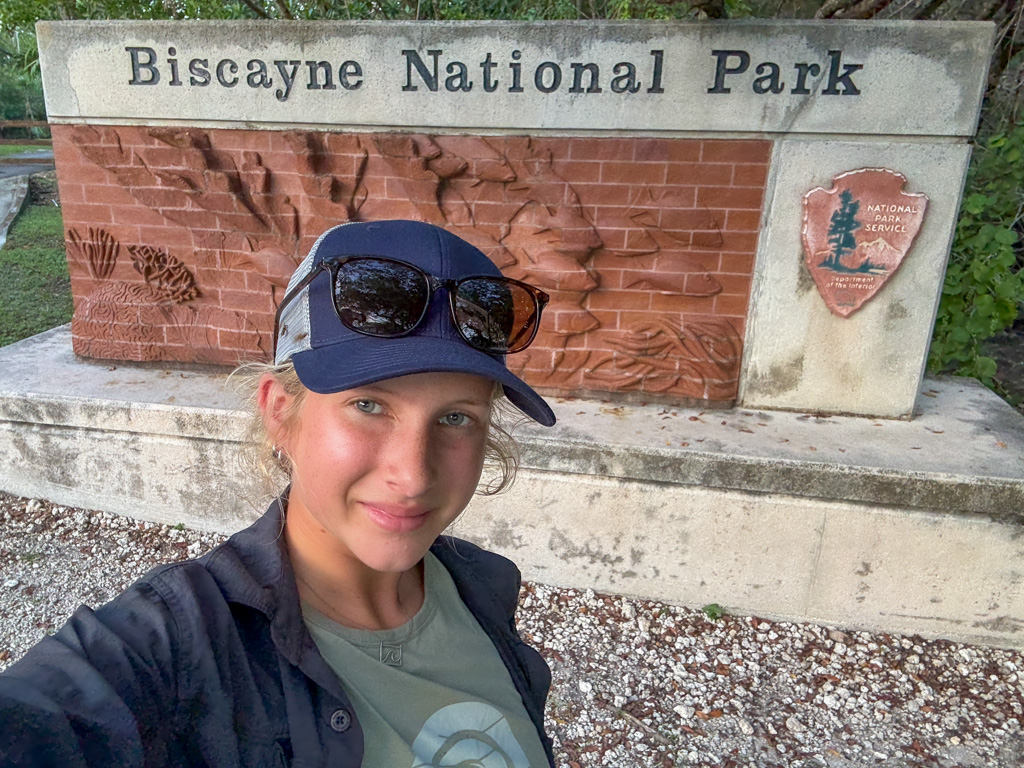
Luckily, most of the days at Biscayne are spent out on the water, a mosquito-free paradise of turquoise blue. Compared to the cold, low-visibility waters of the Pacific Northwest, where I started my Scientific Diving journey, Biscayne is paradise. Looking down at coral patches from 40 feet above on the boat is unbelievable. My first day at the park, I get in four dives observing Shelby Moneysmith, Ana Zangroniz, and Amanda Rivard as they do fish ID Reef Visual Census (RVC) surveys. I also assist in marine debris removal and scouting for derelict lobster traps.

Biscayne National Park is unique in that it is one of the only National Parks to allow fishing, both recreational and commercial, within its waters (National Park Service). This means it has unique conservation issues, such as ropes, lines, and traps left behind from fishing. These items often foul up with algae and encrusting sponges where they sink to the ocean floor and can smother, tangle, or rip up precious coral habitats, especially during rough weather. At one site alone, we removed over 100 pounds of line.
Next week will be the only week of the year when it is illegal to leave out lobster, stone crab, and blue crab traps. Blue crab traps are only out of season for 10 days every other year. This means park staff basically only have one week every two years where they can go out and determine, which traps are derelict (forgotten, lost, left out “accidentally”) or illegal, and can do a large-scale removal.
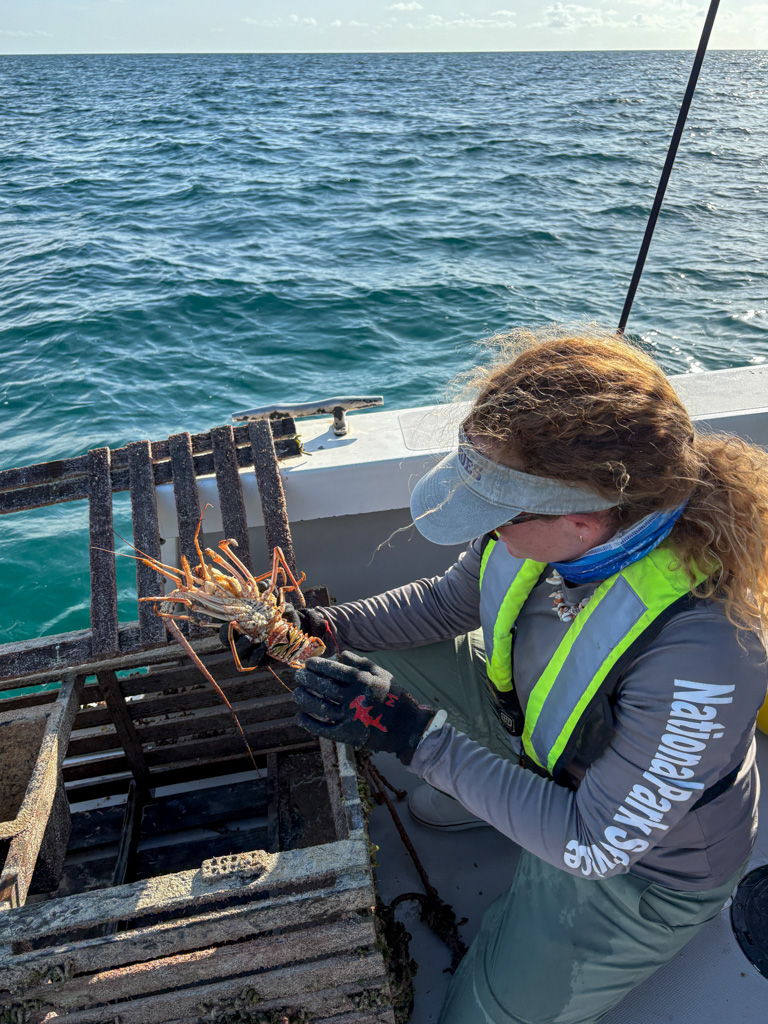
The next day, I head out with Delaina and Bianca, both Scientific Divers through Florida SeaGrant, on a project that is in collaboration with Biscayne National Park. The goal for the day is to find and remove any derelict lobster or stone crab traps. Until Friday, all blue crab traps are still legal. We spot two buoys right away and notice both are missing identification tags, which means they are illegal. However, neither seems derelict (missing parts of the trap indicating it is no longer/can no longer be used). Since this is more in the domain of park law enforcement and not within our jurisdiction, we put the traps back but drop a pin so we can return if needed.
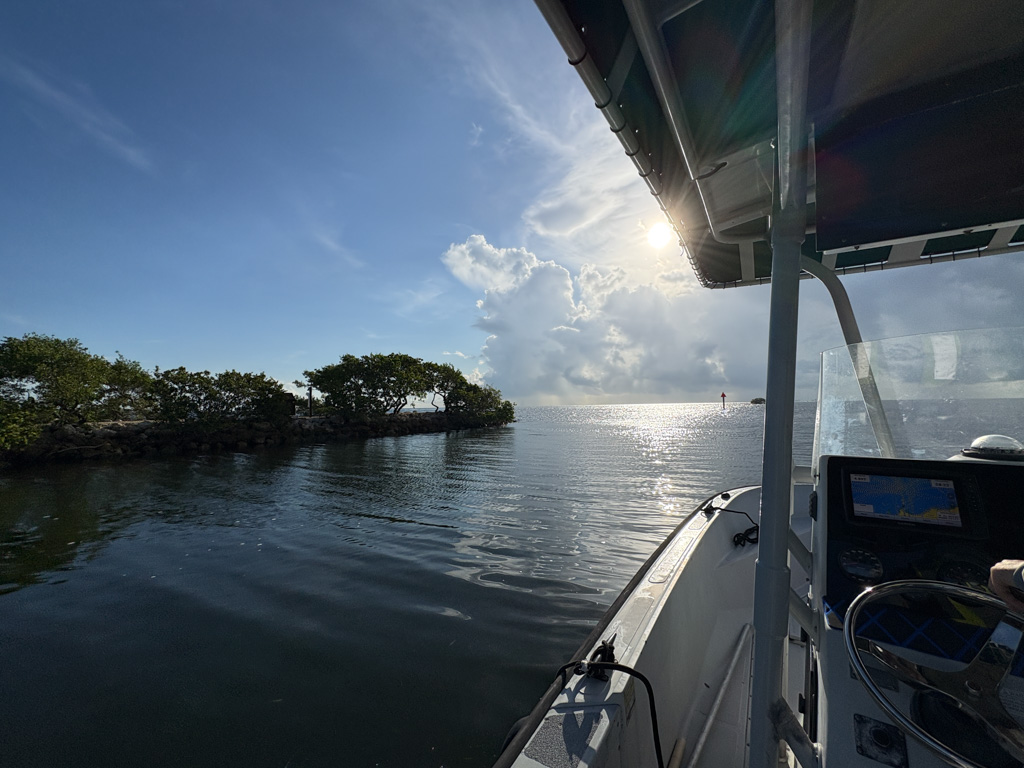
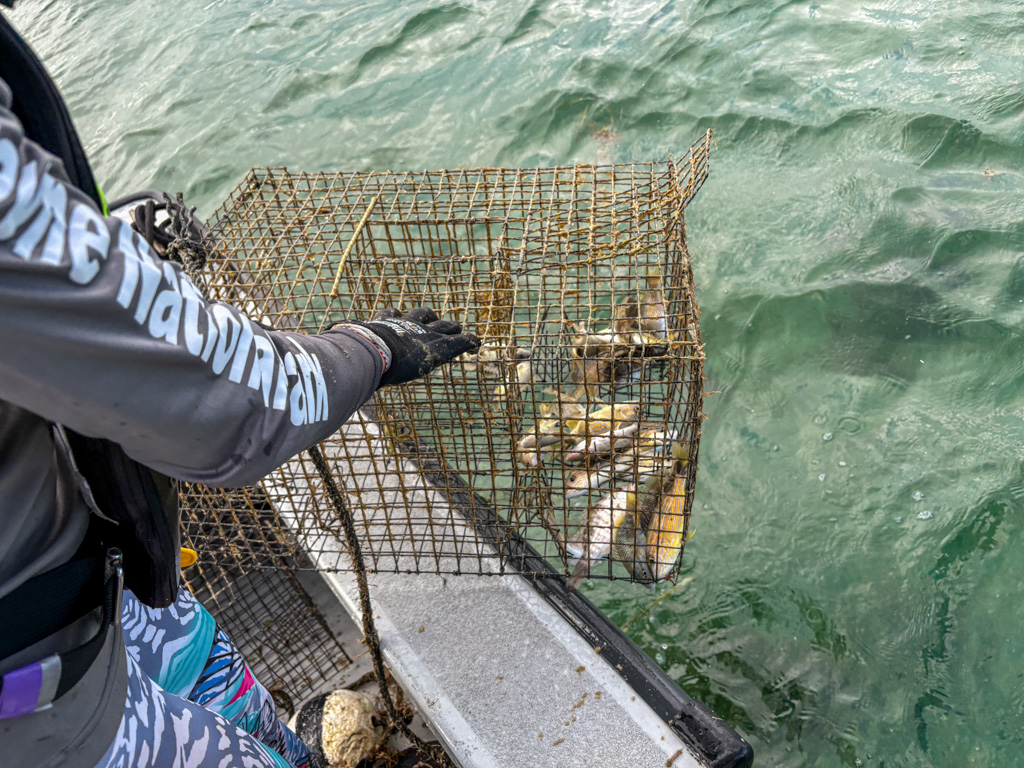
The rather quick start to our day is misleading, and we spend the next couple of hours carefully navigating around the Featherbeds, which are shallow, sandy shoals. We scan the clear water for anything that could be trap material since lobsters and crabs like to burrow into the sandy banks of the shoals where they drop into deeper waters, making this a popular trapping spot. To Delaina and Bianca’s surprise, we don’t find anything. This could potentially mean recreational and commercial fishers are respecting the laws more than in previous years, or it could mean my trap-spotting abilities are subpar. I’d like to think it’s the first explanation.
Finally, we spot a buoy off in the distance, and upon closer inspection, pull up a stone crab trap. Inside are four stone crabs and the remains of many more. If stone crabs are stuck in traps together, they will eventually cannibalize each other, another reason why derelict traps are destructive and should be removed.


Based on the number of claws we pulled from the trap, Delaina estimates that at least three crabs had been cannibalized, and the smallest of the four had already shown fresh wounds, indicating early attempts. It was a pretty good feeling to return them to the ocean, even if this included scooping them up and then a less than gentle toss overboard to avoid their large claws.
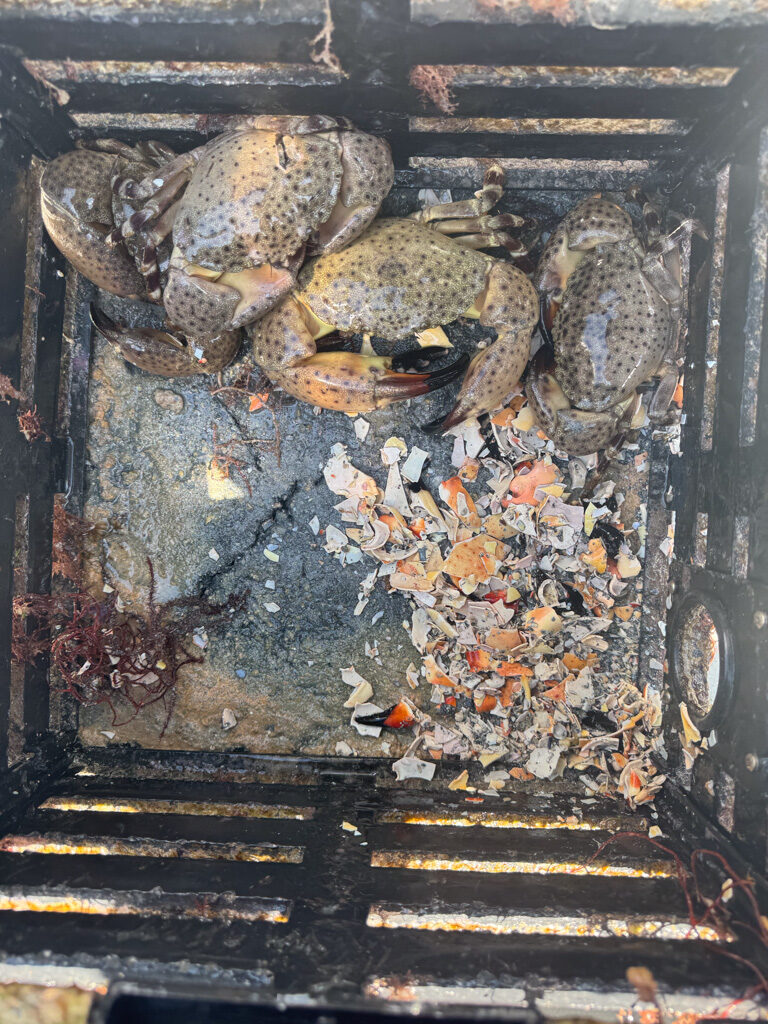
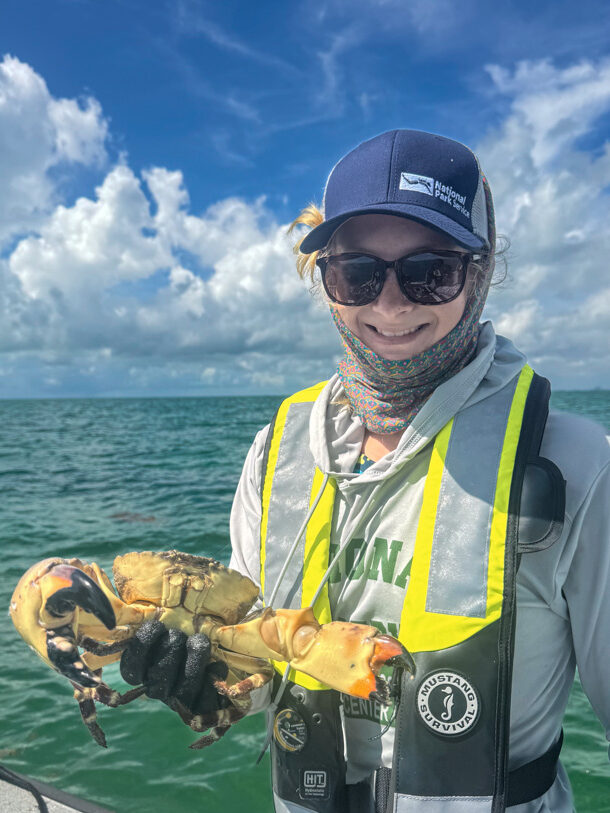
Thursday, I head out again with Delaina and Bianca for turtle surveys which include looking for signs of crawling, new nests, and predation. We also try to pick up what trash we can, because the beaches are covered in it. Rope is tangled in the thick mats of sargassum that wash up on shore, and anything from buoys, beer bottles, and shoes to makeup containers and coolers is littered along the coast. We squelch our way through mud of a particularly fragrant odor and try to weave through mangrove branches that have a hankering to slap us in the face. The mosquitoes… well, I digress, words can’t do them justice. Thankfully, I get to wear a bug jacket, and the mesh keeps them from hungrily chewing at my eyeballs like usual. It quickly becomes my favorite piece of clothing that I’ve never owned.
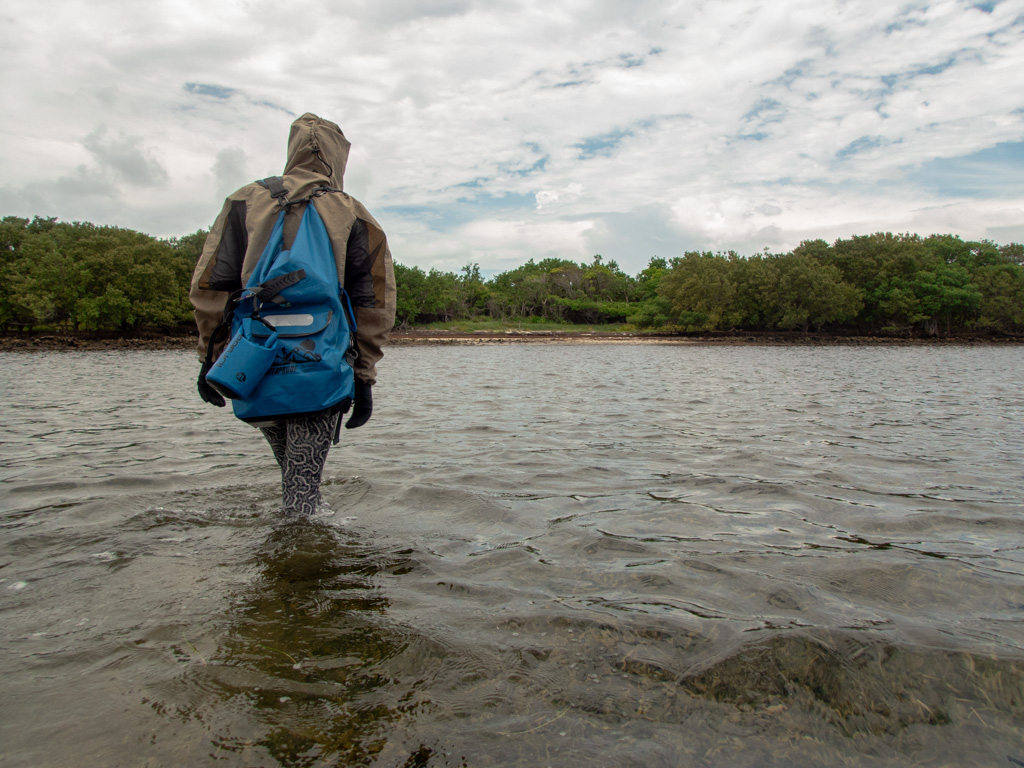
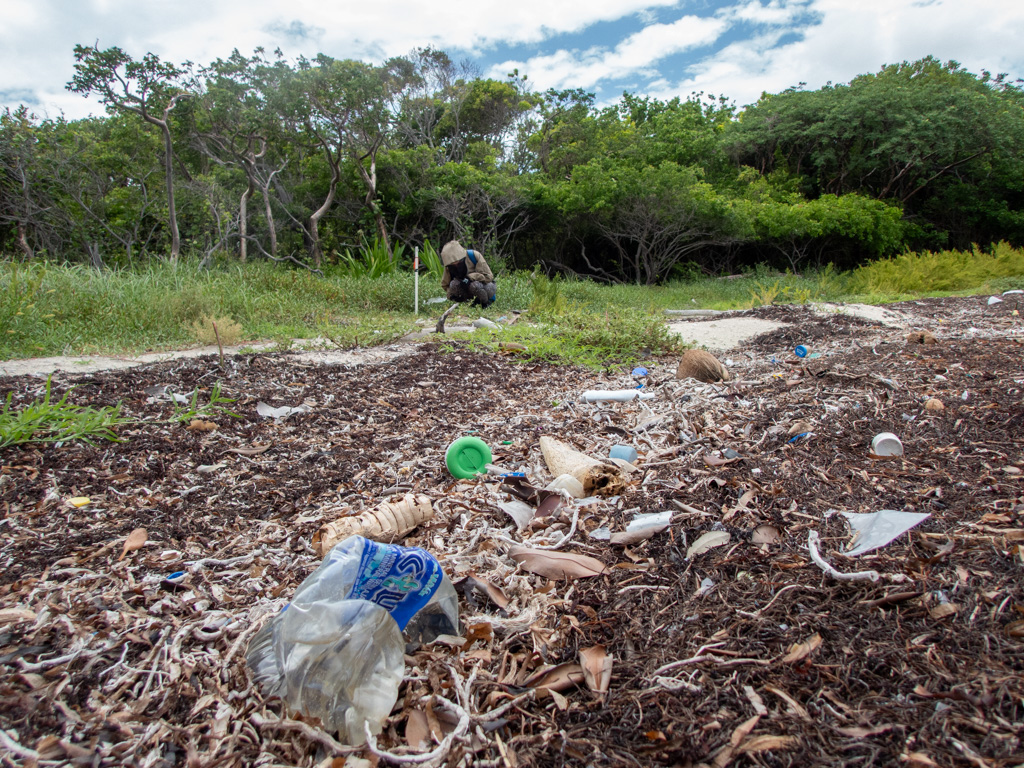
Bianca and I eventually come across a marked nest with a few eggshells strewn about. She excitedly grabs them to verify hatched turtles, and her face drops as she points out incision marks on the leathery, shriveled material. She explains that this is a sign of predation from ghost crabs. The mood turns somber as we excavate the rest of the nest and find evidence of 107 eggs, all likely predated by ghost crabs. It’s a huge disappointment, especially when it’s such a large nest and had the potential of producing many offspring that could return to the beach and lay their own eggs. As we solemnly put the nest back and record our data, the scene in front of me is bleak. Even if every single turtle in this nest had hatched and survived predation, they would have needed to navigate their way around and over the mounds of trash on the beach to make it to the ocean. The haunting scene of bleached bones and carapaces, barely discernible between the bottles and buoys, tells the story of adults who returned only to die on these beaches.
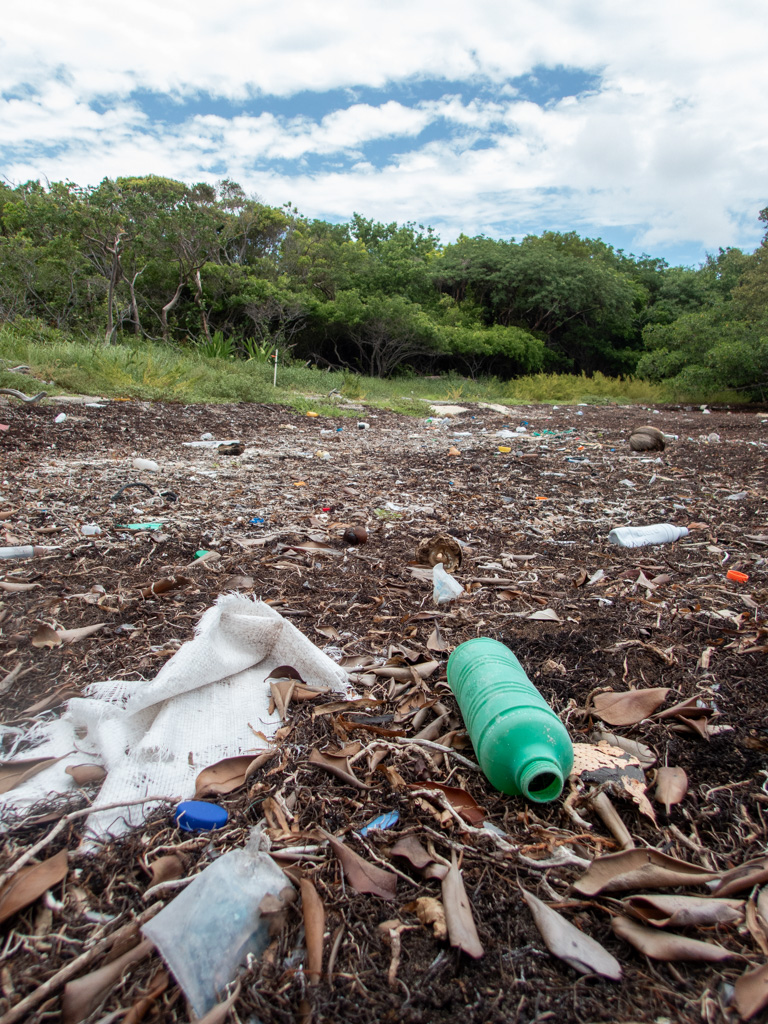
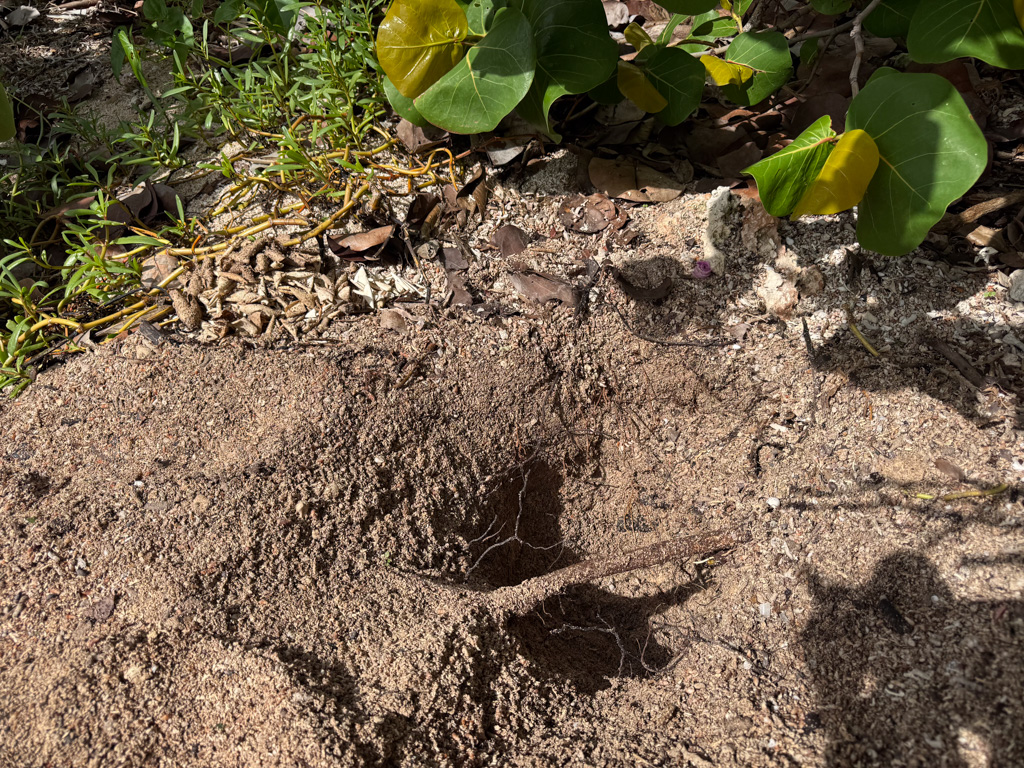
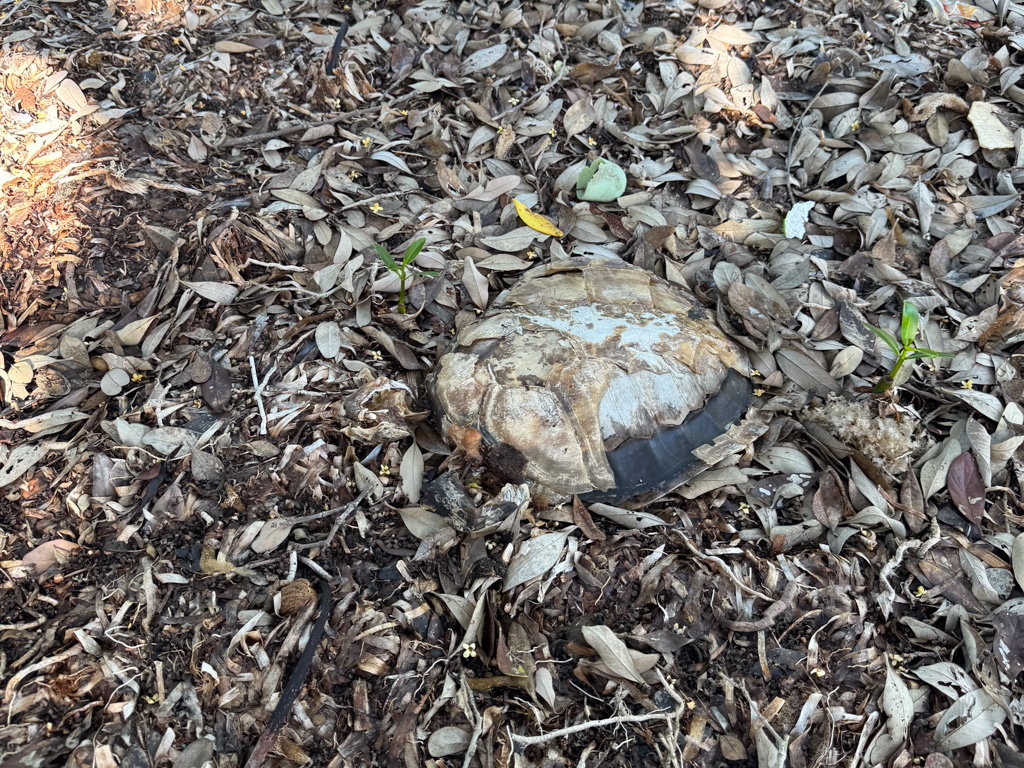
It’s easy to jump to conclusions. Well, why doesn’t the park keep its beaches cleaner? Why don’t they pick up the trash? The simple and honest answer is that they do. They spend countless hours navigating miles of beaches, braving the heat and mosquitoes, regularly picking up hundreds of pounds of trash both in and out of the water. And so do numerous volunteers, participating in Biscayne National Park’s Beach Cleanup Program. The truth is that beach cleanups aren’t going to save the turtles when trash, specifically, plastic, continues to stream in from users of the park and beyond. Curbing the amount of plastic that ends up in the ocean is the only true solution to this problem. But that includes a community and cultural shift in behavior and values, and realistically, beach cleanups are Biscayne’s strongest tool at the moment.
On a happier note, some baby raccoons await us at the dock. As Delaina expertly guides the 27ft Munson into the park slip, a huddle of people at the next boat over draws our attention. After some investigation, the most adorable bleary-eyed raccoons gaze up at us from their nest of rope in the anchor hold. Their mom watches us unconcerned under the shade of the nearby dock ramp, escaping the blistering heat.



Friday, I get to head out with the coral restoration team to observe their surveys and get some practice with the camera rig Brett Seymour from SRC sent me with. Before I left, he told me it was idiot proof and while I like a good challenge, I felt this wasn’t the time or place. This is my first dive with the steel 120s that everyone uses at Biscayne. I’ve been intimidated to go near one so far, probably because I’m imagining a scenario where I go to pick it up in front of the team and it doesn’t budge. Thankfully, I make it into the water, steel tank, camera, and all with no mishaps, and then proceed to have the longest dive I’ve ever been on at 163 minutes. The restoration plot is shallow, an average of 18ft deep, and I watch (very unhelpfully) as the coral team sets out many transect tapes and surveys the site.

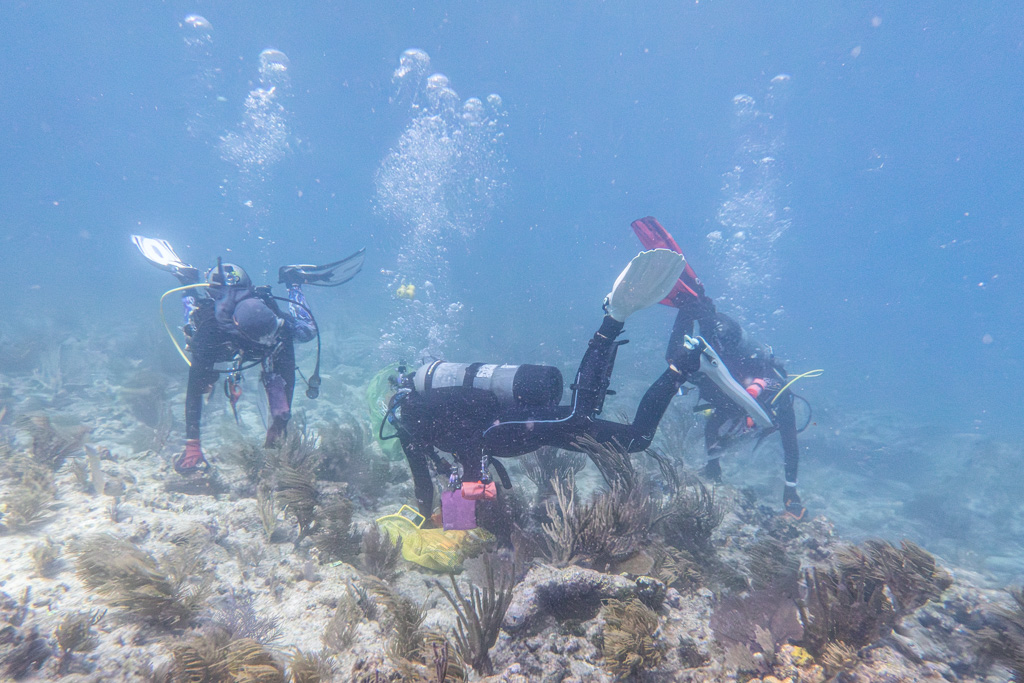
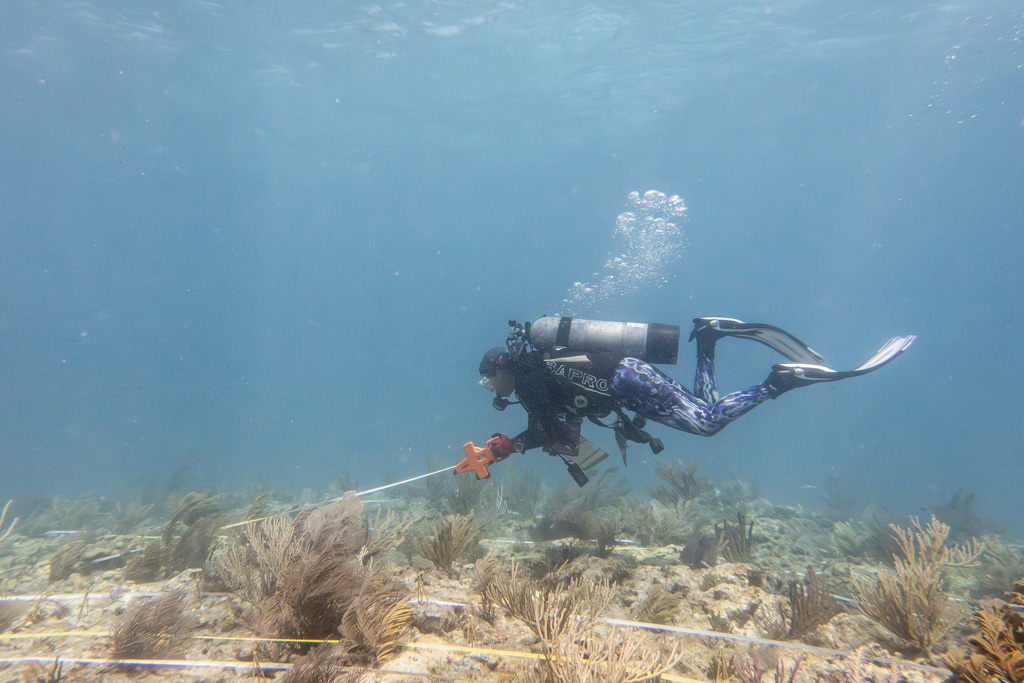
The swell is pretty strong, and they work hard to keep on task as they get rocked back and forth across the plot. I focus on not crashing into their outplanted coral with my heavy tank and awkward camera rig because that would be the most horrible and shameful event of my life. Besides the event earlier in the morning, where I almost let my housemate’s cat escape out the door into the mangroves. The Turkey Point Nuclear Generating Station is just down the bay, known for the most robust population of American crocodiles in the United States due to the warmer discharge water. I’ll leave it at that.

With both the cat and coral surviving my presence, we stop at Boca Chita Lighthouse to eat lunch and then go back to headquarters to finish up the day. I walk back to the housing, more than a little hungry, contemplating whether iguana tastes good and how fast my first week at Biscayne has flown by. Turns out I’m not fast enough to catch them anyway (only to say hi, I swear), and they all skitter safely away, probably on their way to invade the continent.



Thank you for sharing your experiences Larkin. Sounds like an exciting week. Take great pictures and leave lots of bubbles.